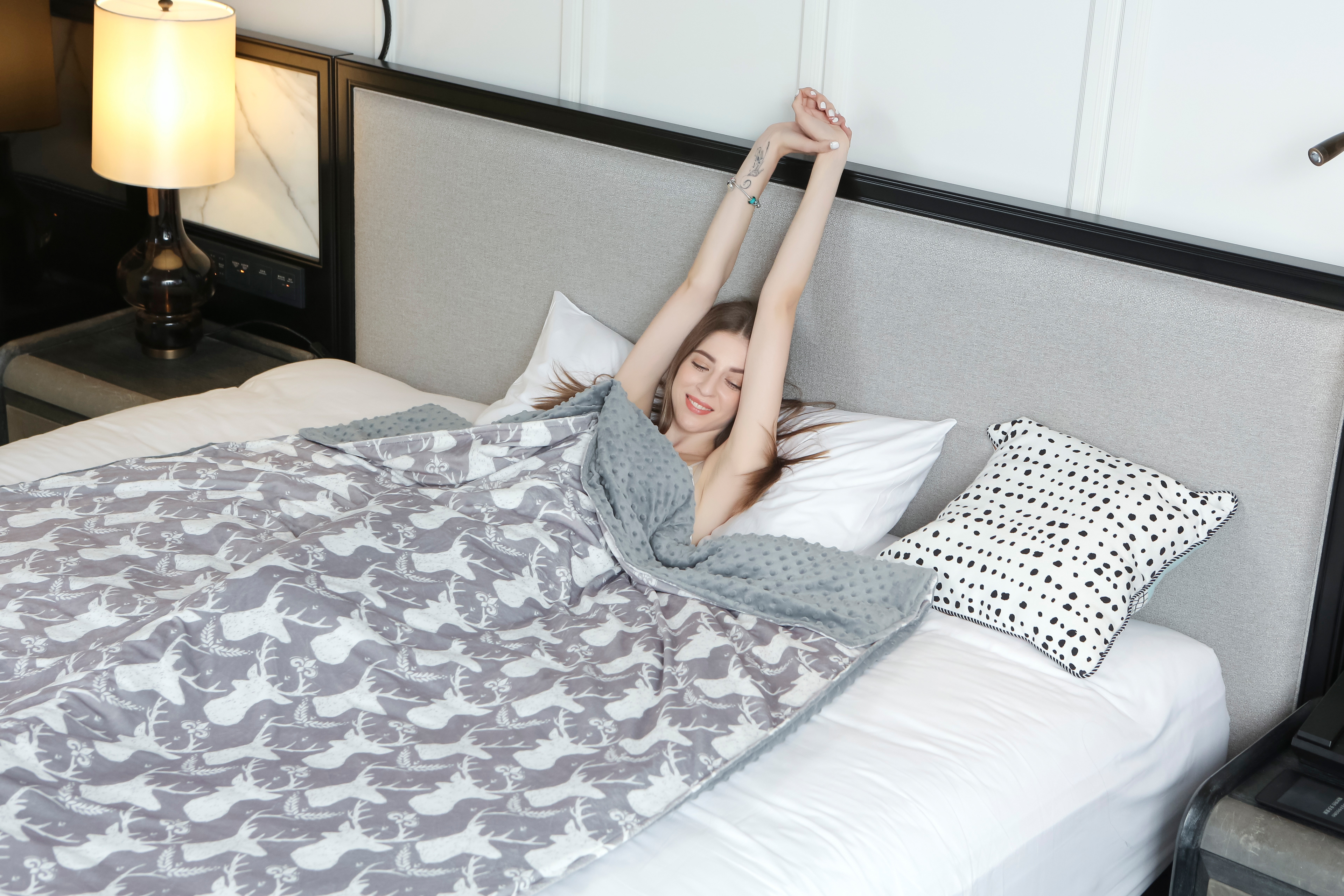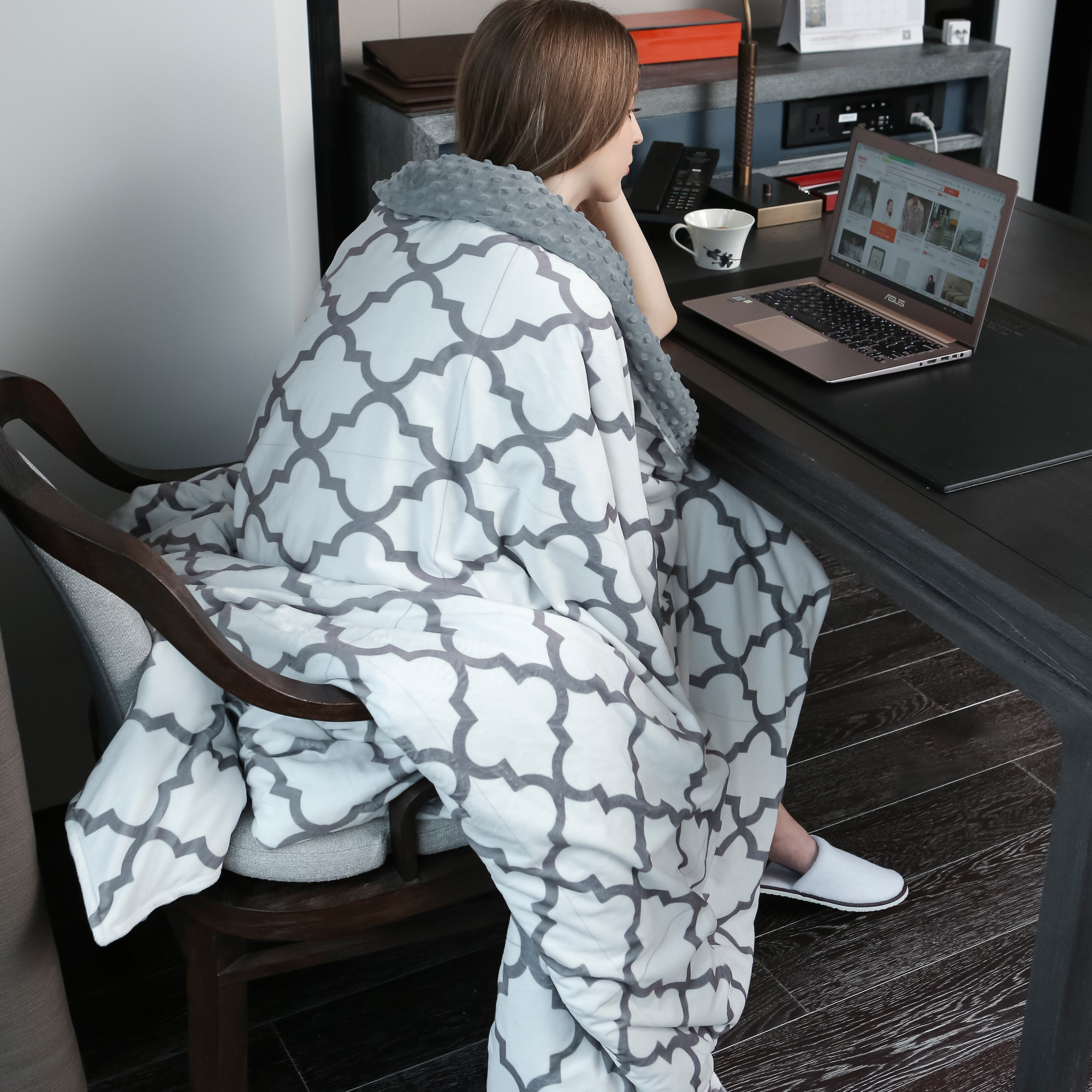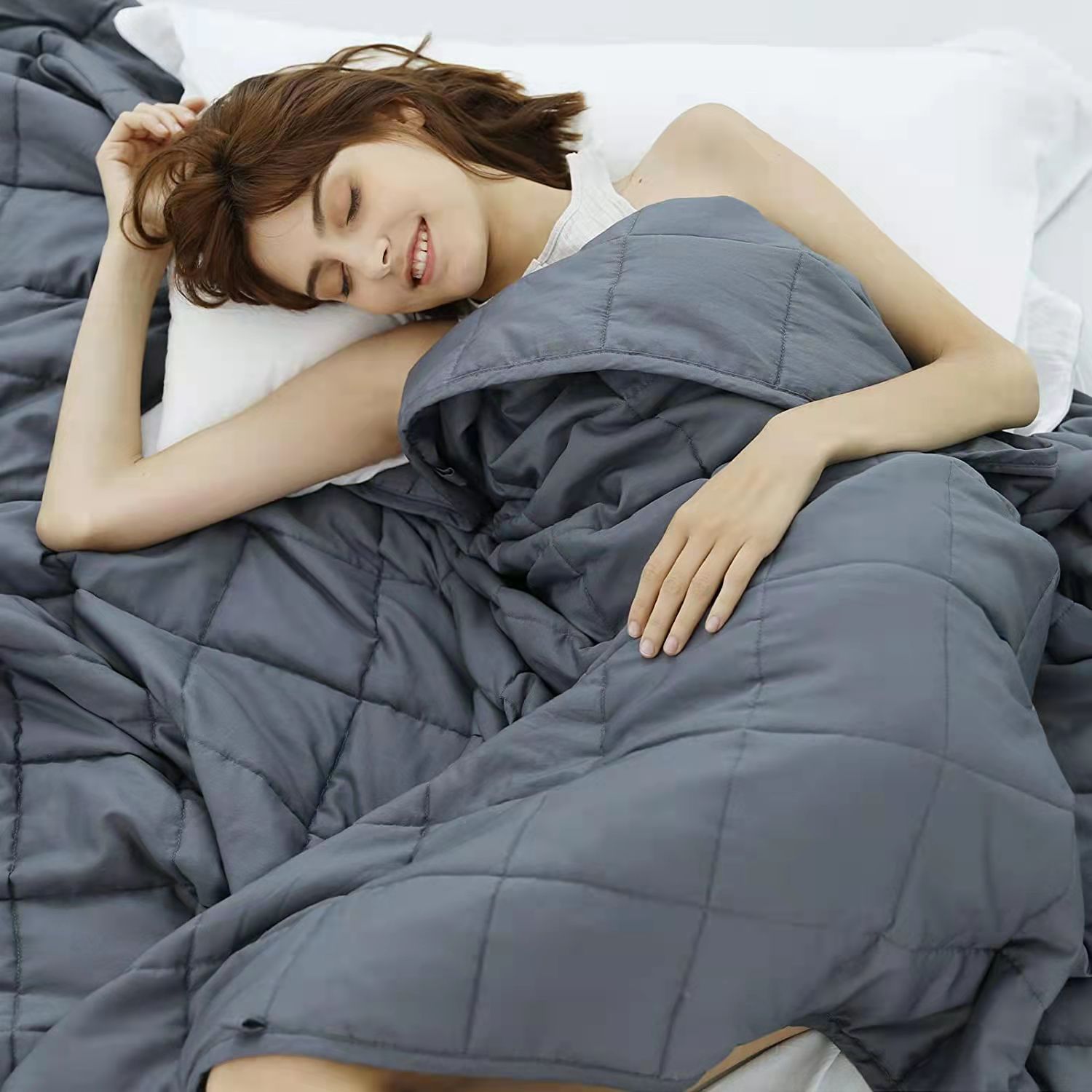When we're sleepy, exhausted and ready to unwind, the warmth of a soft, cozy blanket can make us feel wonderful. But what about when we feel anxious? Could blankets provide the same comfort to help us unwind when our bodies and minds aren't relaxing at all?
Anxiety blankets are weighted blankets, sometimes called gravity blankets, that have been used in many hospitals and treatment programs for many years. Anxiety blankets have become more mainstream recently as people have begun to understand the many benefits of using weighted blankets at home.
Weighted Blankets
Weighted blankets were previously best known for being used in a type of occupational therapy called sensory integration therapy. Sensory integration therapy is used to help people with autism, or other sensory processing disorders, to focus on regulating sensory experiences.
This approach is used with the understanding that when the therapy is used in a structured, repetitive way, the person learns to process and react to sensations more effectively. Blankets have offered a safe sensory experience that can be used easily and in a non-threatening way.
Deep Pressure Stimulation
A weighted blanket offers something called deep pressure stimulation. Again, often traditionally used with those who are challenged with sensory processing conditions, deep pressure stimulation helps calm an overstimulated system.
When applied properly, this pressure, often to be thought of as the same pressure experienced with a warm hug or embrace, a massage, or cuddling, can help the body switch from running its sympathetic nervous system to its parasympathetic nervous system.
The blanket offers an evenly distributed, gentle pressure on a large area of the body at one time, creating a sense of calm and safety for those who feel anxious or overstimulated.
How They Work
There are many designs of weighted anxiety blankets, especially as they have become more popular and mainstream. Most blankets are made with cotton or cotton blends, making them more durable and easier for washing and maintaining. There are also microbial covers that can be used for weighted blankets to help minimize the spreading of germs, especially when the blankets are used in a hospital or treatment center setting. Companies offer a variety of fabrics so people have options for personal comfort and style.
Anxiety blankets are often filled with a form of small plastic pellets. Most blanket brands describe the plastic they use as being BPA free and FDA compliant. There are some companies that use glass beads which are described as the texture of sand, that can help to create a lower profile, less bulky, blanket.
To make sure the weight of the blanket is evenly distributed for maximum effectiveness of the intended pressure stimulation, blankets are often designed with a pattern of squares, similar to a quilt. Each square has the same amount of pellets to ensure consistent pressure across the blanket and sometimes filled with a bit of polyfil as you might find in a traditional comforter or pillow, for added cushion and comfort.
Weights and Sizes
Anxiety blankets are available in a variety of sizes and weights, depending on personal preference, as well as the age and size of the person using the blanket. Weighted blankets are commonly available in weight ranges from 5-25 pounds.
Although this may sound pretty heavy, remember that the weight is being distributed evenly across the entire surface area of the blanket. The intent is for the person using the blanket to feel a consistent amount of gentle pressure across their body.
Other Factors
Another thing to consider is height. There are a variety of sizes of anxiety blankets available, just as you would find with traditional blankets or comforters. Some companies size their blankets by bed sizes, such as twin, full, queen and king. Other companies size their blankets by small, medium, large and extra-large. It is important to keep in mind the age and height of a person, as well as where you will most often be using the blanket.
Post time: Feb-23-2023




